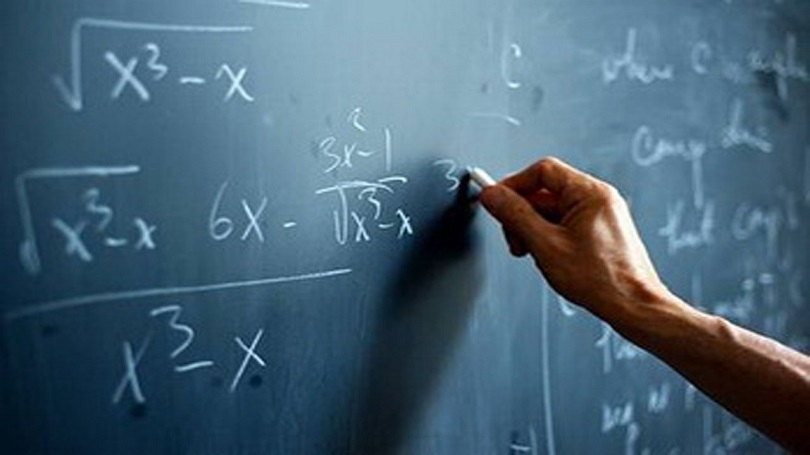
By Firdous Ahmad Mala
MATHEMATICS is one among several other human endeavours that have shaped the current state-of-the-art in science and technology. While, on the one hand, mathematics holds a key position in any curriculum, on the other hand, imparting mathematics instruction has remained a headache for almost all institutions, even at the university level.
It is not uncommon to find mathematicians not adept at the science of imparting instruction in mathematics. Charles Dodgson, aka Lewis Carroll, the author of Alice in Wonderland and Looking Through the Glass is reported to have found teaching extremely daunting. The prince of mathematics, Carl Friedrich Gauss is reported to have hated teaching for he believed that this way students robbed him of his precious time. He is later reported to have started enjoying it when the quality of students improved.
One of the finest mathematical brains of our time, Grigori Perelman who declined to accept the Fields Prize after cracking one of the hardest problems in mathematics, the Poincaré Conjecture has been reported to have quit his position at the Steklov Institute in 2005 because he finds mathematics a painful topic to discuss.
This situation is grim and disheartening. Those who have had the chance to watch the movie, The Beautiful Mind might remember how awful a teacher John Nash was depicted to have been at Princeton. The fact remains that all good scholars are not good teachers. In fact, some excellent scholars and researchers, such as those mentioned above have proved to be pathetic at instruction and dissemination of information.
Is there a cure? A remedy? Perhaps, yes.
Calculus, Analysis, Combinatorics and Geometry are not all there is to mathematics. In the words of Ian Stewart, one of the finest popularizers of mathematics of the time, “During the past fifty years, more mathematics has been created than in all previous ages put together”. Given the quantum of research articles produced every year and the dismal situation of instruction in Higher Educational Institutions (HEIs), the question of didactics becomes a highly serious issue and concern in mathematics. We are in dire need of exceptional teachers. For that, we need to introduce or embrace Mathematics Education and find a respectable place for it in our already-vague-and-confusing curriculum of mathematics. Mathematics Education is the practice of teaching and learning mathematics, alongside the associated research. It is the knowledge of how, what, when, where and why of teaching mathematics.
In 2015, a project called the INDRUM (International Network for Didactic Research in University Mathematics) was established the primary aim of which is to contribute to the development of research in mathematical didactics at all levels of university education. In the three INDRUM conferences held thus far in 2016, 2018 and 2020, a decent exchange of ideas has taken place and a lot of good quality research has been shared in this regard. In a recent 2021 Springer publication titled “Research and Development in University Mathematics Education,” several key points of these INDRUM conferences have been put in understandable words that may help us distinguish mathematicians from mathematics educationists.
One particular research discussed in this book is regarding the current status of didactics in mathematics in some countries including Australia, and the USA. In Australia, there is a clear divide between mathematicians and mathematics educators. This divide, however, does not exist in the USA. As a matter of fact, in the United States, mathematics education positions and one-third of the doctoral programmes are offered in Mathematics Education. The Aussies, however, are now beginning to understand the way forward. They are rectifying the mistakes and acknowledging that Mathematics Education is becoming indispensable and urgent.
The condition of our HEIs is disappointing. Each academic year, hundreds if not thousands of postgrads are handed degrees with which they hardly know what to do. They are hardly acquainted enough with the subject to become good instructors given that the forerunners are themselves not deep-rooted in the ins and outs of instruction.
Over a course of more than a decade of mathematics teaching at elementary, school and higher levels, it has dawned upon me that merely perfecting mastery over the content we teach is not going to make our teaching desirably better. We need to embrace Mathematics education and learn the tricks of the trade before we torrent theorems and exercises at our students.
Unfortunately, teaching positions are decided based on how well someone has done in academics and research and not on an assessment of how much the candidate is in love with the subject. In the words of M. E. Sangster, “No one should teach who is not in love with teaching”.
The art of instruction is holier and harder to master than reaching a scholarly position bereft of skills and compassion. It takes a big heart to shape little minds.
Views expressed in the article are the author’s own and do not necessarily represent the editorial stance of Kashmir Observer
- The author is Assistant professor GDC Sopore, Jammu & Kashmir and can be reached at firdousmala@gmail.com
Follow this link to join our WhatsApp group: Join Now
Be Part of Quality Journalism |
Quality journalism takes a lot of time, money and hard work to produce and despite all the hardships we still do it. Our reporters and editors are working overtime in Kashmir and beyond to cover what you care about, break big stories, and expose injustices that can change lives. Today more people are reading Kashmir Observer than ever, but only a handful are paying while advertising revenues are falling fast. |
| ACT NOW |
| MONTHLY | Rs 100 | |
| YEARLY | Rs 1000 | |
| LIFETIME | Rs 10000 | |











